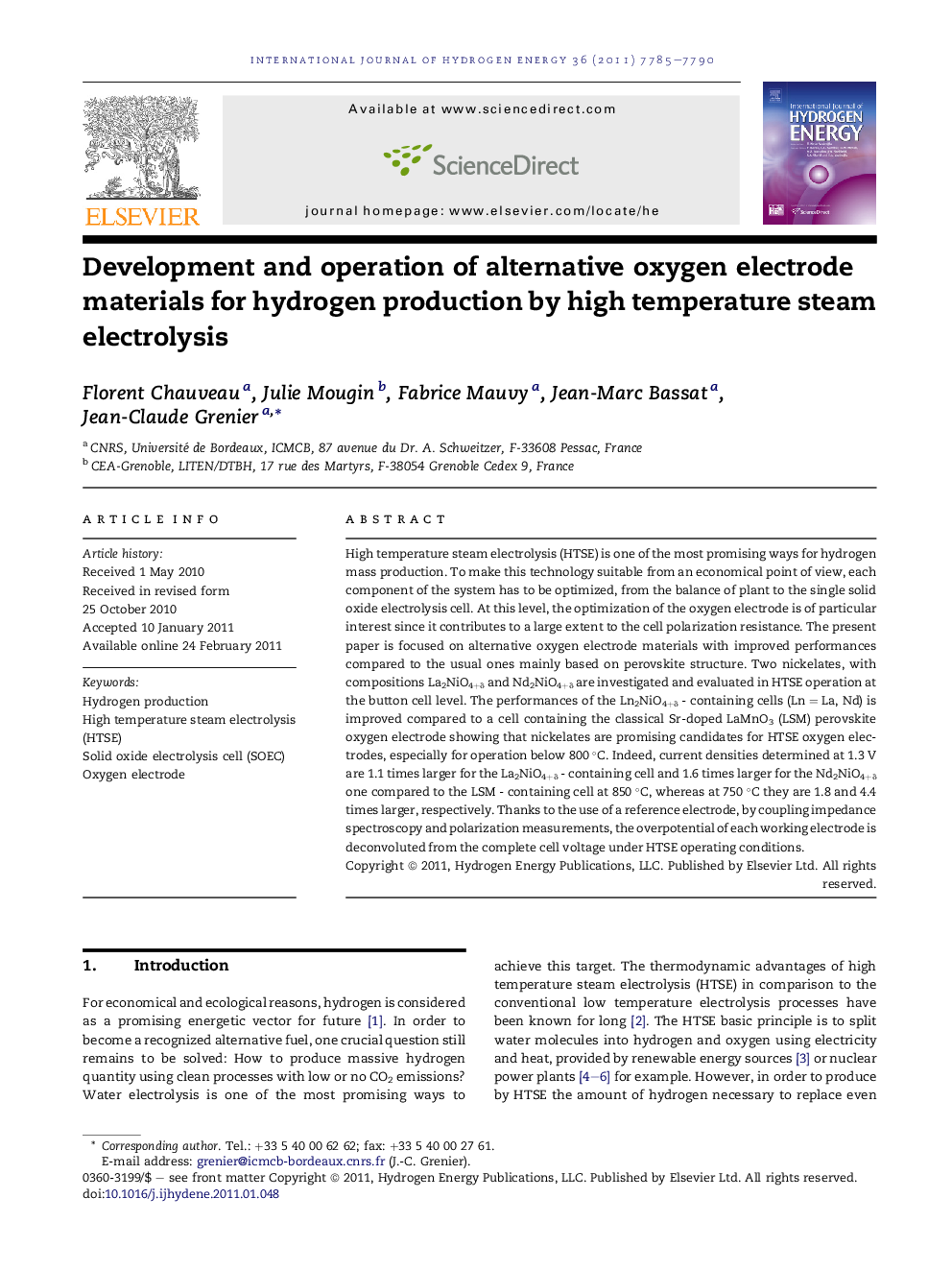| Article ID | Journal | Published Year | Pages | File Type |
|---|---|---|---|---|
| 1279311 | International Journal of Hydrogen Energy | 2011 | 6 Pages |
High temperature steam electrolysis (HTSE) is one of the most promising ways for hydrogen mass production. To make this technology suitable from an economical point of view, each component of the system has to be optimized, from the balance of plant to the single solid oxide electrolysis cell. At this level, the optimization of the oxygen electrode is of particular interest since it contributes to a large extent to the cell polarization resistance. The present paper is focused on alternative oxygen electrode materials with improved performances compared to the usual ones mainly based on perovskite structure. Two nickelates, with compositions La2NiO4+δ and Nd2NiO4+δ are investigated and evaluated in HTSE operation at the button cell level. The performances of the Ln2NiO4+δ - containing cells (Ln = La, Nd) is improved compared to a cell containing the classical Sr-doped LaMnO3 (LSM) perovskite oxygen electrode showing that nickelates are promising candidates for HTSE oxygen electrodes, especially for operation below 800 °C. Indeed, current densities determined at 1.3 V are 1.1 times larger for the La2NiO4+δ - containing cell and 1.6 times larger for the Nd2NiO4+δ one compared to the LSM - containing cell at 850 °C, whereas at 750 °C they are 1.8 and 4.4 times larger, respectively. Thanks to the use of a reference electrode, by coupling impedance spectroscopy and polarization measurements, the overpotential of each working electrode is deconvoluted from the complete cell voltage under HTSE operating conditions.
